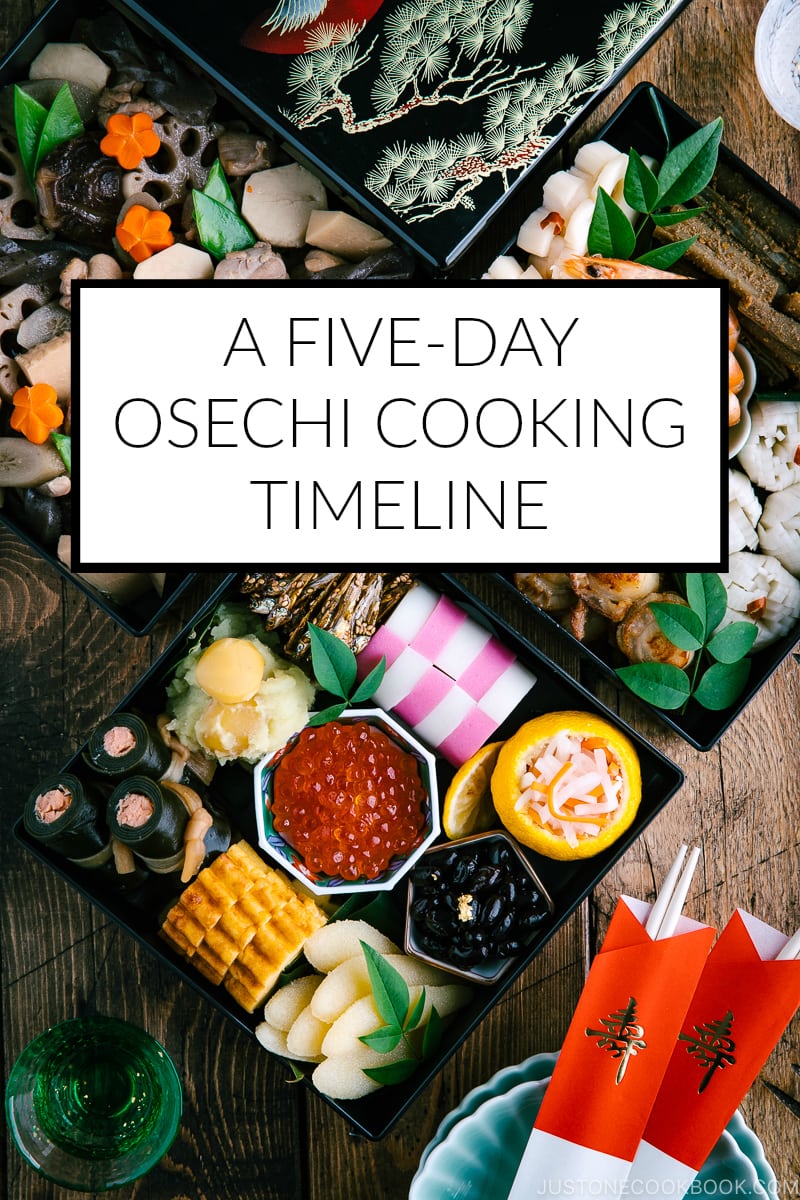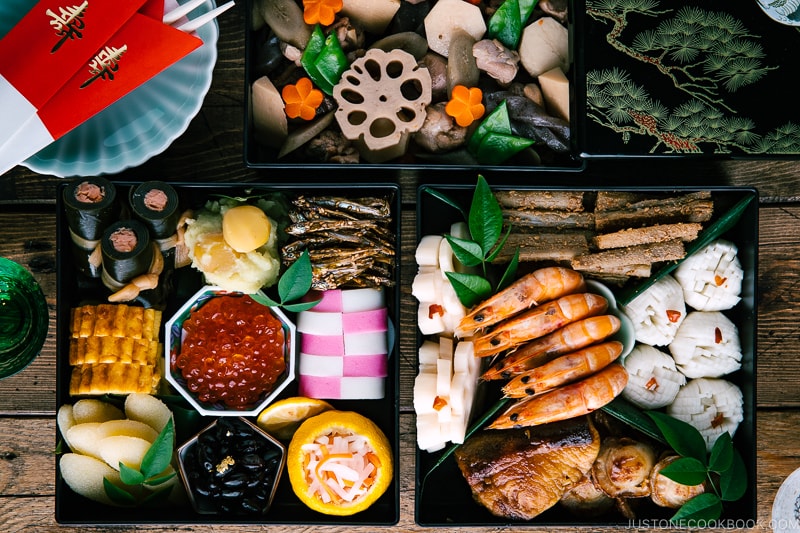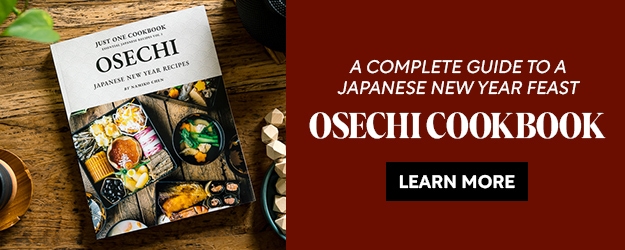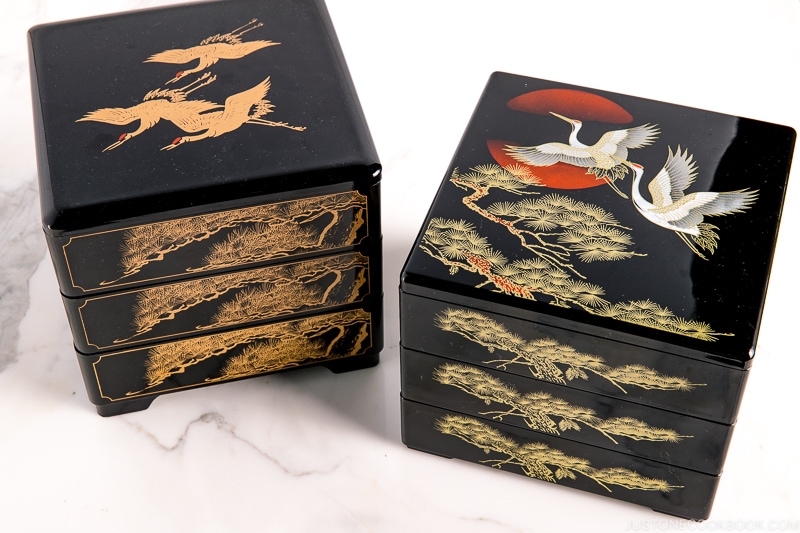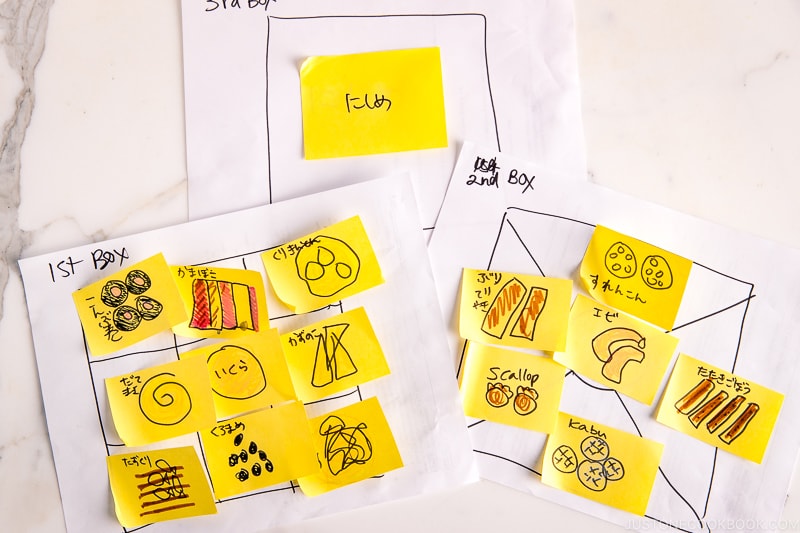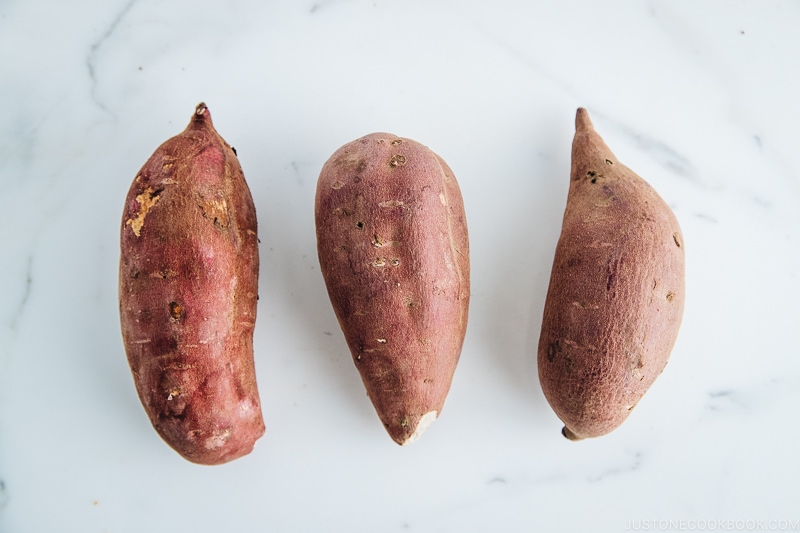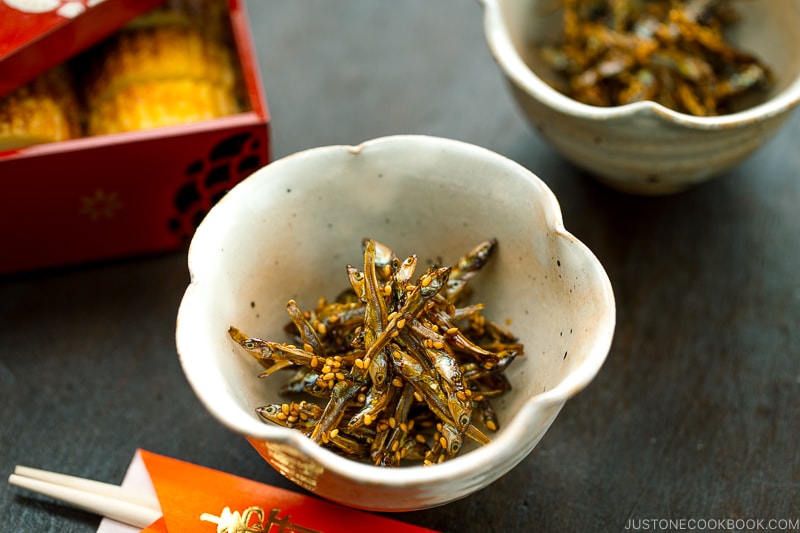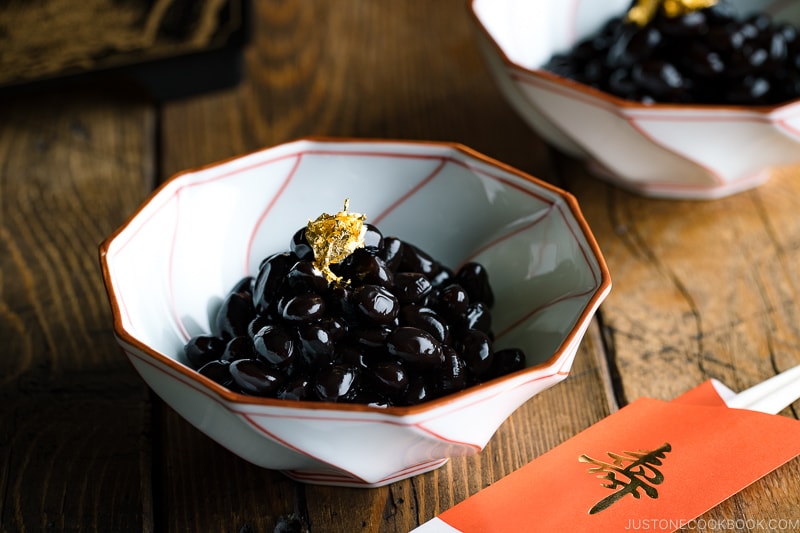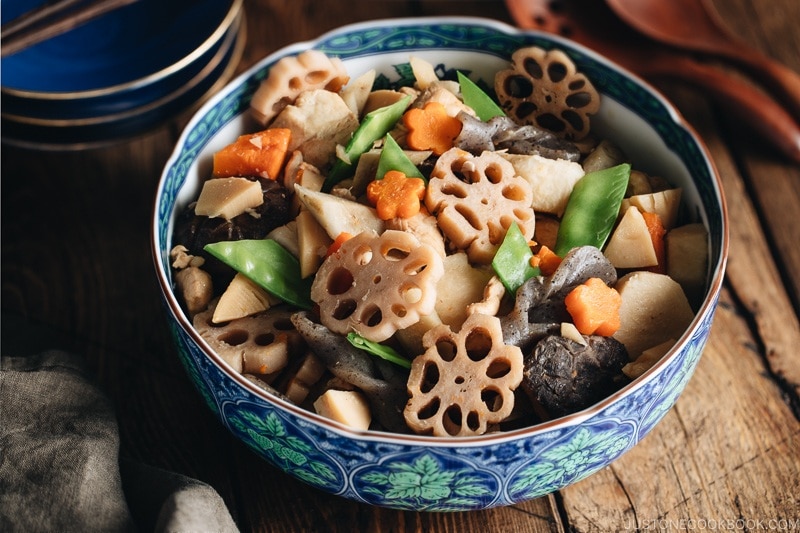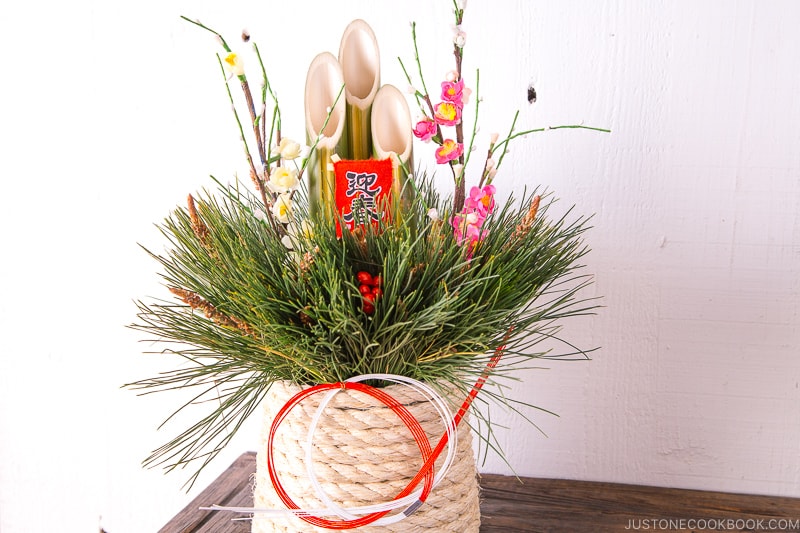The Japanese start the new year celebration with Osechi Ryori (おせち料理), a special meal offered to the Year God and enjoyed on New Year’s Day. These customary dishes from Japanese cuisine symbolize good fortune and longevity and are beautifully packed in a lacquered jubako box. This traditional feast is a wonderful way to usher in the new year. However, it takes a lot of time and effort to prepare these elaborate dishes. In fact, Japanese home cooks spend the last several days of the year in the kitchen preparing for Japanese New Year (JNY). While it’s popular to buy at department stores and convenience stores these days, a store-bought meal doesn’t carry the same meaning and spirit. When prepared from scratch, Osechi Ryori has a special, one-of-a-kind feel suitable for Japan’s most important holiday. It’s a beautiful tradition worth sharing and passing on to the next generation, too. To make your own experience smoother, I’m sharing my 5-Day Osechi cooking timeline and tips here. You don’t have to follow it to a T, but having a plan makes me feel so much less overwhelmed about such a big undertaking. I hope this will encourage you to make Osechi Ryori of your own. Now, let’s get started!
Start Osechi Prep 4 Weeks Before
There’s a lot that you can do to prepare in the weeks leading up to New Year’s Day. Follow my bonus prepping guide for how to plan and what to buy starting 4 weeks before JNY. This will help to lower your stress during the busiest time of the year.
December 1st (4 Weeks Before JNY): The Rough Idea
Draft a list of the menu: Mark which dishes you will make from scratch or buy from the store. Review and update your recipes from the previous year if necessary.
My Osechi Menu
December 11th (3 Weeks Before): Inventory Check
Check kitchen equipment: Osechi boxes, serving dishes, cutlery, pots and pans, and anything you might need for cooking and serving. Clean up the pantry and check ingredients Purchase Osechi box dividers: Read my How to Pack Osechi Ryori post to learn why bamboo leaves and mini containers are helpful.
December 18th (2 Weeks Before): Finalize Menu + Shopping Trip #1
Finalize the Osechi menu: Use sticky notes to label what dish goes into which compartment of the Osechi boxes. Planning the layout ensures that you have enough dishes and simplifies food arrangement on the big day. Print out the Osechi recipes: Carefully read the recipes and double-check the ingredients and equipment you will need. Purchase condiments and dry ingredients (Shopping Trip #1): Don’t wait till the last minute. They may be sold out toward the end of the month! Soy sauce, sake, mirin, rice vinegar, sugar, salt, saikyo miso (for Kansai-style ozoni) Katsuobushi and kombu for dashi (Japanese soup stock) Black soybeans (kuromame or kuro mame) for sweet black bean/soybeans Azuki beans for sweet red bean paste (anko) Hidaka kombu and dried gourd strips (kanpyo) for salmon kombu rolls Dried shiitake mushrooms for simmered chicken and vegetables Dried sardines/anchovies (niboshi) for candied sardines White sesame seeds for pounded burdock root Dried red chili peppers for pickled chrysanthemum turnip and pickled lotus root Soybean flour (kinako) for mochi Chestnuts in heavy syrup (kuri kanroni) for candied chestnuts and sweet potatoes Mochi (rice cake) or glutinous rice/sweet rice (mochigome) Soba noodles to make toshikoshi soba for New Year’s Eve on December 31st
December 27th (5 Days Before): Clean The House + Shopping Trip #2
Clean the house: Clean the entry, living room, and bathrooms. Plan out the meals till December 31st: I make easy dinner menus such as hot pots (Sukiyaki, Shabu Shabu, Oden, etc.) and udon noodles for lunch. Stock up on regular groceries: Buy eggs, milk, bread, salad, fruit, etc. for the rest of the week. Buy alcoholic and non-alcoholic drinks: Restock your beverages after the holiday party! Buy root vegetables for Osechi (Shopping Trip #2): These items last longer, so purchase them early. Japanese sweet potatoes (satsumaimo) for candied chestnuts and sweet potatoes Carrots for daikon and carrot salad and simmered chicken and vegetables Burdock roots (gobo) for pounded burdock root and simmered chicken and vegetables Lotus roots (renkon) for pickled lotus root Japanese taro roots (satoimo) for simmered chicken and vegetables Konnyaku for simmered chicken and vegetables Daikon radish for daikon and carrot salad Japanese turnips (kabu) for pickled chrysanthemum turnip. Remember: Cut off the leaves of daikon and turnips to prevent them from drying out.
5-Day Osechi Cooking Timeline
Here is your 5-day Osechi cooking countdown of what to do starting 4 days before the Japanese New Year (JNY) and on the big day!
December 28th (4 Days Before JNY): Start Cooking! Cooking Day 1
Make Candied Sardines (Tazukuri): Among Osechi dishes, candied sardines last for a long time, so start cooking this dish. Make Herring Roe (Kazunoko): De-salting, peeling, and marinating. Continue cleaning the house: Clean the dining room and kitchen.
December 29th (3 Days Before): Final Shopping Trip #3 + Cooking Day 2
Buy Osechi ingredients (Final Shopping Trip #3): Do not buy these ingredients prior to 12/29. Black tiger shrimp for simmered shrimp Yellowtail (hamachi/buri 鰤) for yellowtail teriyaki Salted salmon for salmon kombu rolls (if you can’t purchase pre-salted salmon from your local Japanese grocery store, make Salted Salmon the previous week) Ikura (salmon roe) Chicken for ozoni and simmered chicken and vegetables Kamaboko fish cakes Hanpen fish cake for sweet rolled omelette Snow peas for simmered chicken and vegetables Mitsuba for ozoni Yuzu for daikon and carrot salad (kohaku-namasu) and ozoni Work on decorative cuts: Decorative cutting for carrots and lotus root is not necessary; however, if you have extra time, prepare them ahead and store in the fridge. Make vinegared dishes: Vinegared dishes last for a long time, so cook these dishes next! Pickled Lotus Root (Su Renkon) Pickled Chrysanthemum Turnip (Kikka Kabu) Pounded Burdock Root with Sesame Sauce (Tataki Gobo) if you have time Daikon & Carrot Salad (Namasu) if you have time Re-hydrate Dried shiitake mushrooms (soak before going to sleep) Black soybeans (need to soak up to 8 hours; soak at midnight and start cooking at 8 am on December 30th)
December 30th (2 Days Before): Cooking Day 3
Prepare dashi: Make good homemade dashi, which we will need for simmered dishes and ozoni. Make vinegared dishes (cont.): Pounded Burdock Root with Sesame Sauce (Tataki Gobo) Daikon & Carrot Salad (Namasu) Cook simmered dishes: Sweet Black Soybeans (Kuromame) (takes 4 hours to cook!) Simmered Chicken and Vegetables (Chikuzenni) or Instant Pot Nishime Make Sweet Rolled Omelette (Datemaki) Cook Candied Chestnut and Sweet Potatoes (Kuri Kinton)
December 31th (1 Day Before): Cooking Day 4
Cook simmered dishes (cont.): Simmered Shrimp (Ebi no Umani) Salmon Kombu Roll (Kobumaki) Make grilled dishes (can be made tomorrow morning): Yellowtail Teriyaki (Buri no Teriyaki) Butter Shoyu Scallops Prep ozoni: Kansai (Kyoto)-style or Kanto (Tokyo)-style (for Kansai-style, add Saikyo Miso tomorrow morning). Pack all dishes in containers: Keep all the dishes in airtight containers and store them in the refrigerator. Make Toshikoshi Soba: Don’t forget to eat soba noodles today!
Before going to sleep…
Set the table: Get everything set up (plates, chopsticks, glasses, sake cups, etc) so you can focus on last-minute preparation the next day. Chill your drinks: Make sure there’s enough ice in the freezer.
January 1st: Final Cooking Day 5 + Osechi Packing (2.5–3 hours)
Grill: If you didn’t make yesterday, cook Yellowtail Teriyaki and Butter Soy Sauce Scallops. Bring back to room temp: You can’t pack hot food in lacquered boxes. If you do not want to eat cold food, take out the dishes from the refrigerator about 30 minutes prior to packing. Cut the kamaboko: Cut the decorative fish cake and the datemaki. Pack in Osechi boxes: See my detailed guide on How to Pack Osechi Ryori. Prepare the mochi: Toast mochi and season. Finish the ozoni: Reheat and then add miso and mochi. Prepare the drinks: Heat up sake and prepare other drinks. Clean up the kitchen: If you have the luxury of time or a helpful guest, get the sink cleared and the dishwasher running and empty it after done running.
Now you have a detailed cooking timeline and the best tips for Osechi cooking! Don’t be shy to enlist help from your spouses, partners, and kids. If you have any questions at all, please leave a message in the comments below. I’m here to help you! I wish you all the best in preparing this most significant spread of the year.
More Helpful Guides for Japanese New Year
Japanese New Year Osechi Ryorir (Japanese New Year’s Food) How to Pack Osechi Ryori in 3-Tier Boxes
